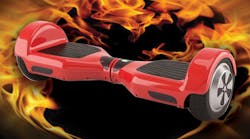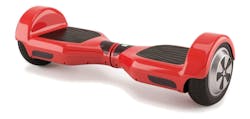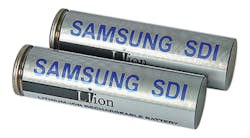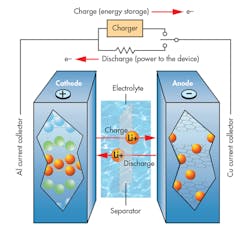This file type includes high resolution graphics and schematics when applicable.
Serious issues surround the countless videos of hoverboard falls posted on social media, and especially the hoverboard fires shown on the news. Delving into the technical side of this fire-hazard situation, I found out the following:
The Consumer Product Safety Commission (CPSC) recently released a statement saying that it is working non-stop to find the root cause of hoverboards becoming a fire hazard (Fig. 1). In the meantime, Northbrook, Ill.-based Underwriters Laboratories (UL) announced that currently there is no UL certification for hoverboards themselves. In other words, neither hoverboards nor their components have been certified under any standard for safety.
It is very likely that the cause of fire is related to the battery packs inside the hoverboards—even though the fires have started in all sorts of different circumstances (e.g., during charging or while riding). Hoverboards use lithium-ion battery packs; there are usually around 20 rechargeable cells per pack. An individual cell looks very similar to an AA nickel-metal hydride (Ni-MH) battery (Fig. 2).
Fires caused by lithium-ion batteries in laptops, phones, and even airplanes have occurred in the past. Now, such incidents have put hoverboards under the public microscope. Recently, some U.S. airlines banned hoverboards on passenger flights. Similarly, the U.S. Postal Service stopped shipping hoverboards by air.
Inside a lithium-ion battery, there is a thin sheet of micro-perforated plastic (a separator) that keeps the anode and cathode apart while allowing lithium ions to pass through. The battery is charged by sending ions from the cathode to the anode. The battery is discharged when ions are transferred back from the anode to the cathode (Fig. 3).
Until recently, the use of lithium-ion batteries had become more popular among small power tools or IT devices, such as laptops, cordless drills, electric screwdrivers, and e-bikes. Compared to other rechargeable batteries likr NiMH, lithium-ion batteries can store more energy in smaller packages. From an ecological point of view, lithium-ion batteries do not contain environmentally harmful material and therefore are environmentally friendly.
Although lithium-ion batteries have great advantages, lithium does heat up and expand during charging. This causes leaked lithium ions to build up on a battery’s surface, which might originate short-circuits and decrease overall battery life. Also, when a lithium-ion battery is overheated or damaged, it can burst into flames or even explode.
Lithium-ion battery assembly techniques focus on avoiding short circuits within the cell. Because of the natural properties of lithium, however, this task is very challenging and expensive. Researchers are trying to find the solutions to lithium’s disadvantages. For example, a team of researchers at Stanford University just developed a lithium-ion battery that does not overheat through the use of nanotechnology.
A hoverboard is an application that increases the risks of problems with the lithium-ion battery. Just during a single ride, a hoverboard might get kicked and abused. If something goes wrong, a hoverboard’s 4,000 mA/hour battery pack is able to release quite a significant amount of energy in just seconds.
Because the single most expensive component in a hoverboard is the lithium-ion battery pack, some hoverboard manufacturers are unfortunately using non-brand batteries to minimize costs. Many of these batteries clearly do not provide the same high quality and safety standard as, for example, those manufactured by Samsung SDI Co. Ltd. (one of the largest providers of lithium-ion batteries).
It is suspected that most of the hoverboards produced in China might not use original Samsung or LG batteries, with non-brand or counterfeit Samsung trademark batteries being used in their place. Plenty of those batteries are finding their way into the country inside hoverboards. Obviously, not all of the off-brand batteries are catching fire, with thousands of batteries produced per year. But the problem has become widespread enough to where the CPSC has sufficient cause to pursue an investigation. This effort could even lead to a battery or hoverboard recall.
Unfortunately, to date there is no specific resource online where consumers can check the safety of their hoverboards. If you are planning to purchase one and/or keep one at home, do yourself a favor: Keep a fire extinguisher nearby, and never charge it while unattended.
This file type includes high resolution graphics and schematics when applicable.




